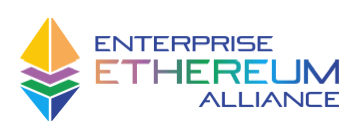Educating the Business Community About the Power of Ethereum
The Ethereum business ecosystem has seen rapid growth in recent years, which speaks directly to the technology’s value and relevance in today’s world. However, the only way to ensure that growth continues is to equip a wider range of business professionals with the education and tools necessary to begin building on Ethereum.
At the EEA, we put education front and center, and we’re working hard to arm businesses with the information, training and support they need to enter the Ethereum space and elevate their organizations with this valuable resource.
That’s why we’re so excited to share our series of educational primers, designed specifically for those new to the Ethereum ecosystem. These primers will offer introductions to many of the different concepts and facets of Ethereum (and blockchain as a whole) to help more professionals get started on the platform.
Is there a particular topic you think we should explore in an upcoming primer? We want to hear from you. Email us at [email protected] to share your ideas.
Watch our short introductory video to hear from EEA Executive Director Dan Burnett about the details and value of this program.
Introduction to Ethereum and Sustainability
Background
Since its launch in 2015, Ethereum has seen substantial platform maturation, enjoyed significant user growth and is on its way to becoming a more mainstream business tool. However, despite the myriad benefits it offers, there’s no denying that the platform has long endured significant criticism for its environmental footprint. This critique is not unwarranted. In fact, Ethereum’s energy consumption challenges were exacerbated in recent years due to the platform’s immense growth and popularity. However, the important thing for businesses – and all users – to know is that those environmental challenges are now a thing of the past. To better understand Ethereum’s historical sustainability issues and the platform’s recent changes, let’s start at the beginning.
In 2015, Ethereum was launched as a Proof of Work (PoW) platform. PoW is a consensus mechanism, or a way of proposing new blocks and gaining consensus from participants to add them to the Ethereum blockchain. With PoW, Ethereum node operators, known as “miners,” compete to propose new blocks in the chain. This competition demands significant computational work and requires large amounts of energy to execute, which ultimately means a large carbon footprint. Yet, while it may seem counterintuitive, this was all by design. Ethereum’s founders developed the platform this way on purpose, utilizing a concept employed by Bitcoin as a way to help keep it secure. Since mining new blocks requires significant computational work, and miners have to pay for the energy (and buy lots of hardware), no single miner can dominate the network. This approach helps keep block production decentralized, which ensures the security of the network and prevents malicious actions.
All that said, a PoW approach was never the long-term plan. Ethereum’s founders knew that PoW would eventually become unsustainable, and switching to Proof of Stake (PoS) – a different consensus mechanism – was always a planned step on the Ethereum roadmap. With PoS, contributors, known as “validators,” make new block proposals by locking up 32 ETH of their own money – or, to put it in different terms, they put their “stake” in the proposal. Before a block is added to the chain it must be approved by two-thirds of validators, and if it’s rejected a portion of the validator’s 32 ETH investment is lost. By enforcing these high costs as punishment for misbehaving, PoS systems deter bad actors and help ensure that only quality blocks are proposed, which improves the overall security of the ecosystem.
Ethereum’s move from PoW to PoS, known as The Merge, was a highly anticipated change that took place in September, 2022. The Merge drastically slashed the platform’s energy consumption and significantly reduced its carbon footprint. In fact, according to the Ethereum Foundation, the move cut Ethereum’s energy consumption by an incredible 99.95%, which directly addresses the environmental concerns that many have raised. For businesses, this move helps position Ethereum as an even more viable and attractive business tool, removing the environmental stigma that has long surrounded the blockchain.
Perhaps you’re wondering, why has The Merge taken so long to execute? The short answer is, it’s complicated. Building a scalable and decentralized PoS system was an extremely complex undertaking that required extensive research and fundamental innovations in cryptography. The PoS technology available at the time of Ethereum’s launch did not meet the community’s standards for decentralization and security, and while other projects opted to move to PoS earlier and make compromises in these areas, Ethereum refused to go that route. Instead, developers took the time needed to ensure the long-term health, functionality and growth of the platform, all critical factors for business users.
The business benefits of the move to PoS are clear: a more sustainable platform makes for a more attractive business tool and mitigates the risk of incurring environmental shame for building on a PoW blockchain. In fact, the move to a more sustainable model is likely to boost Ethereum’s appeal across a broad audience, attracting more users and ultimately helping to build a stronger, more secure ecosystem.
It’s important to note that The Merge is not Ethereum’s “final destination.” In reality, it is but one step on the Ethereum roadmap, and the platform will continue to see further developments and upgrades in the coming years that will help strengthen it even further. For businesses, the biggest takeaway from this change is that the negative environmental attention that Ethereum has endured is now history and the platform’s footprint is but a tiny fraction of what it once was. This adds up to a significantly more sustainable and attractive tool that can help businesses across industries elevate operations and drive efficiencies.

 Review: The Ethereum Foundation’s pages on
Review: The Ethereum Foundation’s pages on